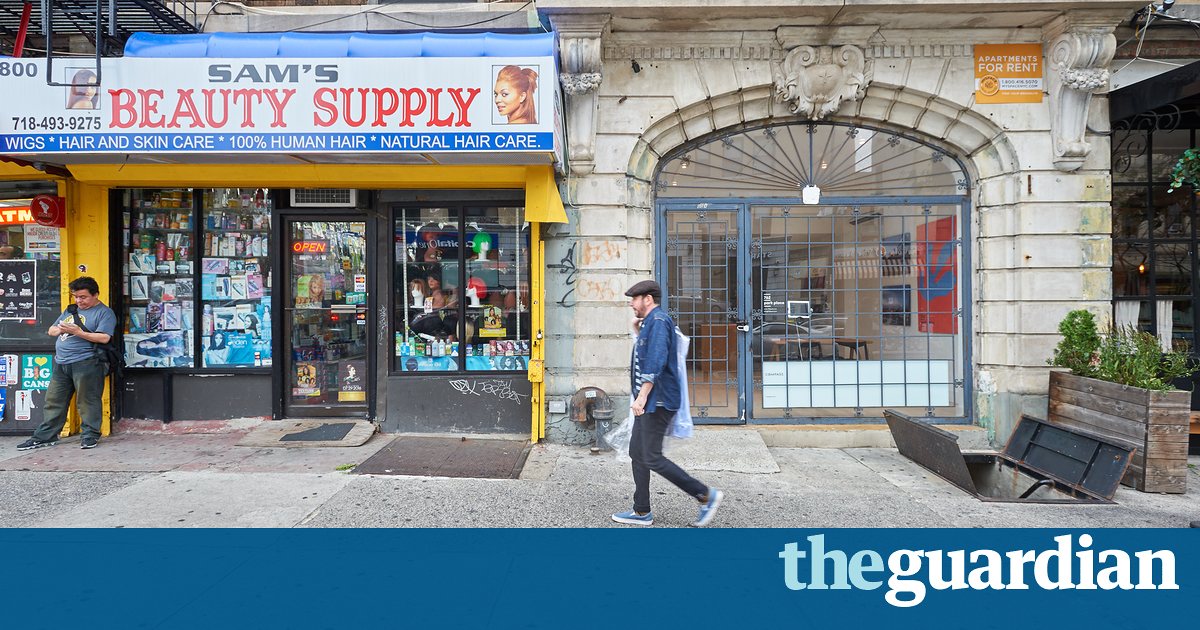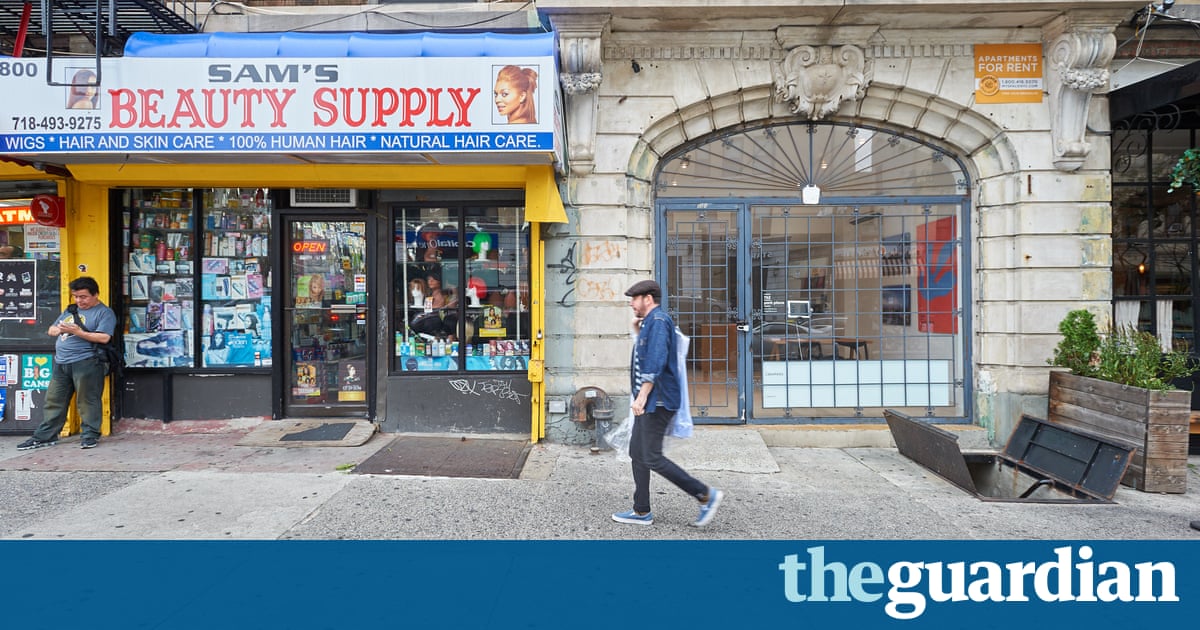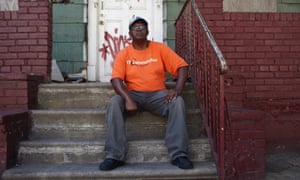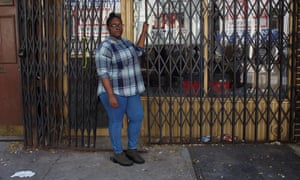The last battle for Brooklyn, America’s most unaffordable place to buy a home

It might be too late for Williamsburg, Bushwick and Bed-Stuy but in Crown Heights, tenants have learned a few tricks to prevent the social cleansing of their neighbourhood. Can they succeed where the rest of Brooklyn failed?

Esteban Girn, an organiser with the Crown Heights Tenant Union, is sitting in a Dunkin Donuts on Eastern Parkway in Brooklyn just before closing time. Employees mop the floors, look at the clock and try not to glare.
At this time of day, there are two nearby bars he could have been hanging out at instead shabby-chic fascimiles of industrial-town dives, except for the $8 beers but he and his husband wont go in them. In fact, he has already told one of the bar owners that hes planning a protest with his neighbours against them.
Like the rest of the tenant union organisers, Girn volunteers his time to help this three-year-old group fight to keep long-time tenants in their homes. Its a deceptively simple assignment but here, in Crown Heights, it might just be the key to stopping yet another episode in New Yorks ongoing history of social cleansing.
All the other organising strategies have been tried in Bushwick, Girn says. They basically pit the landlord against the tenant against the quote-unquote gentrifiers. And when you do that, youre not going to win anything.
Indeed, in the great war against gentrification throughout New York City, most of the battles have been losses. The formerly low-income and heavily minority neighbourhoods of Williamsburg, Bushwick and Bedford-Stuyvesant have already, for all intents and purposes, heavily gentrified.
Next in the crosshairs is Crown Heights, which used to be almost exclusively peopled by African Americans and Hasidic Jews. It is now the last line of defence for affordable Brooklyn, where, according to a new report, the average resident must now spend 124% of their wages to meet the monthly payments on a median-priced home the highest figure in the the country.
A quarter of a century ago in 1991, this neighbourhood was the the site of riots after a Jewish man killed a black seven-year-old in a grisly car accident. But today, both communities face the same problems: rising rents.

The story is the same as it was in Bushwick or Bed-Stuy: as renters get priced out of the rest of New York, many landlords in Crown Heights are trying to chase out long-time and rent-stabilised tenants, so they can charge more to new renters or sell buildings to developers; the developers, meanwhile, are building more luxury units in the neighbourhood.
The losers? Residential tenants who cant afford the new normal, and small neighbourhood businesses.
The CHTU has seen it happen elsewhere in Brooklyn, and is determined Crown Heights wont end up like the rest. The organisation fights on several levels: it looks to rack up wins for residents through individual tenant assistance, lobbying in Albany for better state laws, and direct action such as when, on the coldest day of the winter, tenants in one building found themselves without any heat and a landlord that wasnt responsive.
We rushed the lobby and we sat there until the heat came on, Girn recalls and that only happened when the union called local media. It was the first time I realised the immediacy of having not just an organisation thats in the neighborhood, but actual neighbours.
The CHTU approach is straightforward. We have to disrupt the landlords business model by helping tenants remain in their apartments, Girn says. There are two keys: building community, then educating tenants about their rights and how to enforce them.

Twice a week, Girn accompanies tenants to housing court, to prevent intimidation and show landlords the CHTU is firmly on the tenants side. He also helps tenants figure out who actually owns their buildings: some landlords attempt to obscure their involvement to avoid bad publicity about their tactics or housing conditions.
What Crown Heights has learned from other neighbourhoods is that while big fights might seem unwinnable, small victories can lead to bigger ones. For example, one hold-out tenant can be enough to prevent a developer from buying a building; keeping tenants in place can disrupt the whole cycle of gentrification.
One example of this is sitting across the table from us: Marcia Louisy. Girn says: The only way to put a pause on this [gentrification] is when the Marcias of the world hold it down.
Louisy is a transplant from Jamaica. Eighteen years ago, she moved into a rent-controlled, three-bedroom apartment in Crown Heights. She pays roughly $1,000 a month; the neighbours upstairs pay $4,500. Her apartment could clearly fetch thousands more on the open market, and her landlord has already offered her $250,000 to move.
That sounds like a lot of money, but it would be subject to significant taxes, and probably wouldnt even buy her a small condominium further out in the borough. Shes holding out, and not just because of the money. Thats my apartment, she says. My kids were born in that apartment, theyve grown up in that apartment.
According to Girn, many tenants in the area are harassed and intimidated into taking buyouts, or driven out by crumbling apartments and a lack of repairs. The goal is the same: get rid of rent-controlled tenants with, in many cases, generational rights to remain.
Total disrespect
Vaughn Armour, a 17-year resident of Crown Heights, is also facing down a landlord trying to buy him out. His long-time girlfriend, Barbara Simmons, who lived in the same apartment for 42 years, passed away over Labor Day weekend. Before her memorial service, the landlord went to the apartment to encourage Armour and Simmons son to leave.
Shes not even buried yet, and [the landlord] had the audacity to offer my stepson $5,000 for the apartment, Armour says. That is total disrespect.
He dont realise that Im a member of New York Communities for Change, and I know when it comes to written laws and guidelines that I dont have to go nowhere. We have succession rights. Ive been there for 17 years, a New York state-recognised common-law husband, and her sons been there for 33 years. The only thing this guy can do is give us the succession papers to sign, and a new lease.

New York Communities for Change is another of the groups in Brooklyn fighting to help low- and moderate-income tenants stay in their homes. Like the CHTU, they educate tenants about their rights, advocate for laws that help tenants, and try to help people have a voice in the myriad approval processes that govern development in the city. Armour says the brush with his landlord has spurred him to further action with NYCC.
We need to get out and start talking to tenants in the buildings, and tell them: As long as youre paying your rent and youre not destroying their property or being a nuisance to other neighbours, you shouldnt be harassed, he says. It works, too.
Helping renters stay in their homes, though, is only half the gentrification fight. Developers are also tearing down old buildings to erect luxury apartments that few locals could afford, in a city where rents have risen twice as fast as incomes.
As Armour puts it: Developers shouldnt be able to come in and build something that no one who lives here can afford.
New buildings in neighbourhoods like Crown Heights must usually set aside a certain number of affordable units, although many people cant afford even those. Especially around this area Lefferts, Albany, Kingston the average salary per year is $23,000, says Armour, adding that the affordable housing in some of the new apartment buildings doesnt reflect that. Family of four, $31,000 and up. Who really could afford that from my community?

The biggest new construction project to rile up activists and residents is the Bedford-Union Armory. Its a city-owned building slated for sale and redevelopment as a 13-storey building with 300 rental apartments and 24 condominiums, along with a state-of-the-art recreational centre that, until recently, was receiving support from New York Knicks basketball star Carmelo Anthonys foundation. (Protests and objections from NYCC and the CHTU, among other groups organised by the Real Gentrifiers campaign which opposes for-profit development of affordable housing reportedly led Anthony to quietly end his association with the project.)
There will be 67 affordable rental units in the building, set at 40% and 50% of average median income (or AMI, which New York City designates as about $90,000 for a family of four). The remaining 263 units will either be pegged to slightly above AMI, or for rent on the free market.
Since the city accepted a joint bid from two companies, Slate Property Group and BFC Partners, to redevelop the site, activists have tried to force a renegotiation through protests and publicity with some success. It was the same developer that was tangled up in the Rivington House scandal, Girn says, so we totally used that.
Rivington House was a non-profit nursing home for Aids patients on the gentrifying Lower East Side. It was purchased in February 2015 for $28m by the healthcare company Allure. Deed restrictions required that the site be operated as a non-profit facility, yet two months later, Allure successfully petitioned the city to lift those restrictions for a fee of $16m and then sold it to Slate in May for $116m, making a hefty profit.
Slates plans to turn the property into market-rate condominiums became public on 29 February of this year, touching off a wave of bad publicity, an investigation by the states attorney general and the citys comptroller, and a denouncement from New York City mayor Bill de Blasio.
Because of the Rivington debacle, De Blasio announced he was reconsidering allowing Slates participation in the Armory as well. The company sold its shares in the project to its partner, but anti-gentrification advocates want more: to kill the whole thing.

Evelyn Tully Costa, chair of the Crown Heights South Association and a 10-year resident of the neighbourhood, thinks shes found the way to do that. In place of a residential development on the Armory site, the CHSA is promoting a plan to designate the building with landmark status. They would then redevelop it as a community space with athletics and arts facilities, restaurants, community spaces and a rooftop urban farm. We can and should do better than three basketball courts and five janitor jobs, Costa says.
Instead, they want to go one step further: theyre proposing landmark status for the whole neighbourhood of Crown Heights.
If you landmark, developers hate it bottom line, Costa says. Because much of New Yorks residential zones are already built on, developers look for small buildings they can tear down which is difficult if a neighbourhood has landmark status, and nearly impossible if a specific building does.
Could it work in Crown Heights? There are 33 landmarked or historical districts in Brooklyn, including three in north Crown Heights, which protect 1,752 buildings and sites. Any new construction or alterations are subject to review by the Landmarks Commission. These are often approved, but must be aesthetically compatible with the neighbourhood a fact that has often been used to limit the height of new buildings or kill projects entirely.
But the process takes time. And gentrification can transform a neighbourhood more quickly than many people can react.
Ayanna Prescod is watching it happen. She was born in Crown Heights, as was her mother and her mothers parents too: Prescods grandfather bought his house as a wedding gift in the 1950s for $15,000. The house next door recently sold for $1.8m.
Sitting in Lula Bagel, a pricey coffee shop whose proprietors started with an espresso bar in Williamsburg, she explains over blaring reggae music that her grandmother gets daily inquiries about selling up. We get a lot of cards. Some people are very bold and ring the doorbell, saying: Well take your house for cash. But, like, theres people living here.
Prescod, a young entrepreneur who founded the local news blog OurBKsocial, says she considers educating her neighbours to be part of her community duty. Brooklyn is now the most expensive place to live in America, which is ridiculous. Making sure people know about that thats what I can do.
Williamsburg and Bushwick, to me, are gone forget it, Prescod says. The neighbourhood is totally gone. At least with Crown Heights, we still have the neighborhood feel. I hope it doesnt go away.
Are you experiencing or resisting gentrification in your city? Share your stories in the comments below, through our dedicated callout, or on Twitter using #GlobalGentrification